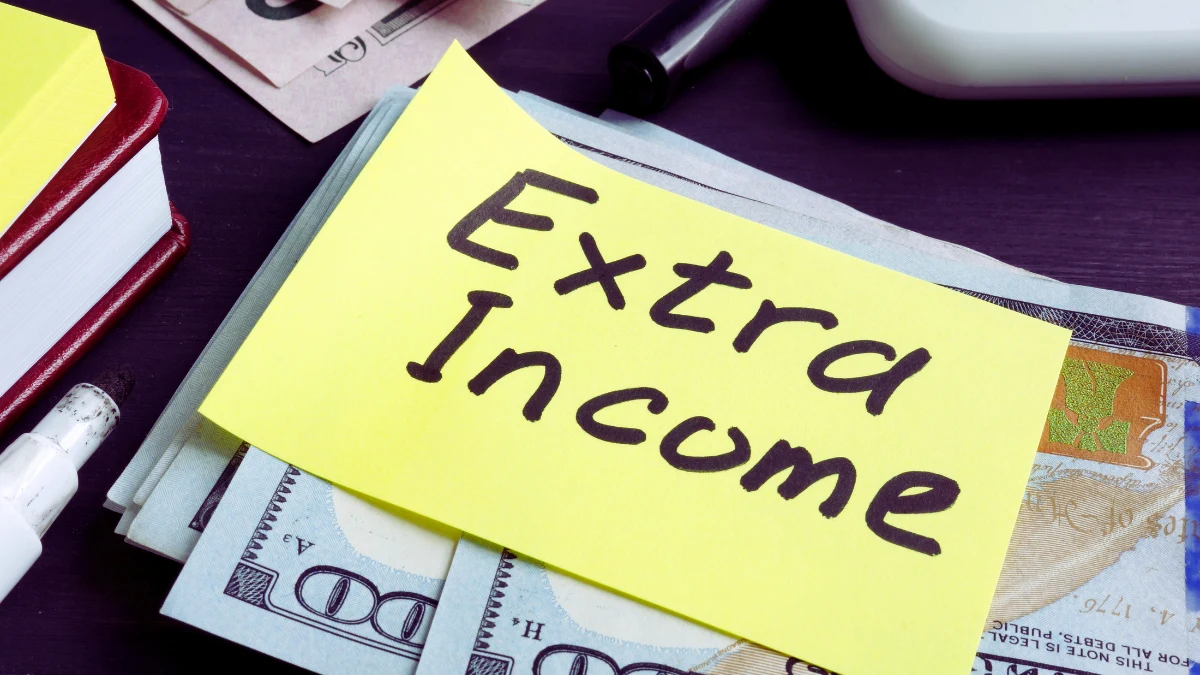If you’re 50 with $70,000 saved for retirement, you’re not alone—and you’re not doomed.
Maybe you wake up at 3 AM worried about money. Perhaps you see friends talking about their six-figure retirement accounts and feel sick to your stomach. Perhaps you think you’ll be working until you drop dead because $70K feels like nothing.
Here’s what no one tells you: You’re actually doing better than most Americans. And starting at 50, you get access to legal “catch-up” money that can add hundreds of thousands to your retirement.
This article shows you exactly where you stand, what tools you can use, and three realistic paths to retirement. No fluff. No impossible dreams. Just math and real strategies that work in 2025.
The Reality Check – Where You Stand vs. Your Peers

Take a deep breath. Your $70,000 puts you ahead of more people than you think.
Over half of American households (54%) report having no dedicated retirement savings. Zero. Nothing. So your $70K already puts you in the top half of Americans.
But what about people your age? Americans in their 50s have an average retirement savings balance of $970,570; the median is $441,611. The average looks scary. But the median (the middle person) has $441,611. That means half of the people your age have less than that.
Your $70K puts you behind the median. But you’re not starting from zero like millions of Americans.
The “magic number” dropped in 2025. Americans’ “magic number” to retire comfortably in 2025 is $1.26 million, $200K less than the $1.46 million reported last year. Even the experts think you need less money now.
The old rule says you should have five times your annual income saved by age 50. If you make $60,000, that’s $300,000. If you make $40,000, that’s $200,000. Most people don’t hit these targets.
Here’s what matters more than where you are: what you do next. And at 50, you get special powers other people don’t have.
Your Catch-Up Arsenal – New 2025 Opportunities

Starting at 50, the IRS basically gives you superpowers.
Regular workers under 50 can put $23,500 into their 401(k) in 2025. You can put $31,000. That’s $7,500 extra every year. Participants in most 401(k), 403(b), governmental 457 plans, and the federal government’s Thrift Savings Plan who are 50 and older generally can contribute up to $31,000 each year, starting in 2025.
But wait. It gets better.
The new “super catch-up” starts in 2025. If you’re between 60 and 63, you can put away even more money. individuals aged 60-63 to the greater of $10,000 or 150% of the regular catch-up limit ($11,250 for 2025). That means $34,750 total into your 401(k) during those four years.
IRAs get catch-up money too. Regular people can put $7,000 into an IRA. You can put $8,000. It’s only an extra $1,000, but it adds up.
Here’s the math that will shock you. Let’s say you put the maximum $7,500 catch-up into your 401(k) every year from 50 to 65. That’s 15 years. With a 7% return, that extra money alone grows to $193,000. Add your current $70,000 growing at 7%, and you’d have about $265,000 just from your existing money and catch-up contributions.
But most people can’t max out everything. Even putting an extra $300 per month (that’s $3,600 per year) would give you an extra $73,000 by age 65.
Health Savings Accounts are retirement gold. If you have a high-deductible health plan, you can put money into an HSA. 2025: $4,300 ind / $8,550 fam; +$1k if 55+. This money goes in tax-free, grows tax-free, and comes out tax-free for medical expenses. After 65, you can use it for anything (you just pay regular income tax).
The Healthcare Reality – Your Biggest Retirement Expense

Let’s talk about the elephant in the room. Healthcare will eat a huge chunk of your retirement money.
A 65-year-old retiring in 2025 can expect to spend an average of $172,500 in health care and medical expenses throughout retirement. That’s $172,500 total over your entire retirement, not per year. But it’s still a lot of money.
Medicare doesn’t cover everything. People think Medicare is free healthcare. It’s not. You still pay premiums, deductibles, and co-pays. Plus, Medicare doesn’t cover dental, vision, or long-term care.
Healthcare costs grow faster than regular inflation. While other prices might go up 3% per year, medical costs often go up 5% or more. This means healthcare gets more expensive compared to everything else.
HSAs are your best weapon against healthcare costs. Remember that Health Savings Account we talked about? Triple tax advantage. Funds usable for non-medical (taxed) after 65. No RMDs. Portable. No other account gives you three tax breaks.
If you can put money into an HSA and not touch it, it becomes a super-powered retirement account. Pay your current medical bills out of pocket if you can. Let the HSA money grow. After 65, you can take it out for any reason.
Long-term care insurance matters more at 50. The average cost for a private nursing home room is about $116,800 per year. Most people can’t afford that out of pocket. But long-term care insurance gets more expensive and harder to get as you age. If you’re healthy at 50, now is the time to look at it.
Smart Social Security – Timing Is Everything

Social Security isn’t just “free money” when you turn 62. When you claim it can make or break your retirement.
The average retired worker gets $1,975 a month as of January 2025. But that’s just the average. Your benefit depends on your earnings history and when you claim.
The 77% rule will change your mind about early claiming. Retirees may see an approximate 77% increase in their Social Security benefits by waiting from age 62 to age 70 to claim benefits. Let’s say you’d get $1,500 per month at age 62. If you wait until 70, you’d get about $2,655 per month. That extra $1,155 per month adds up to $13,860 more per year for the rest of your life.
Most people claim too early. More than 90% of people would benefit from waiting until 70, but only about 10% of beneficiaries do. Why? Because they need the money or they’re scared Social Security will disappear.
Social Security isn’t going away. Even in the worst case, Social Security would still pay about 77% of promised benefits. Politicians won’t let it disappear completely because older people vote.
You need a bridge strategy. If waiting until 70 gets you $1,000 more per month for life, how do you pay bills between 62 and 70? This is where your retirement savings come in. You use your 401(k) and IRA money to live on while letting Social Security grow.
Spousal benefits changed in 2025. Starting in 2025, retirees will no longer be able to file restricted applications. Beneficiaries must now choose between their own earned benefits or spousal benefits, without the flexibility to switch later. This mainly affects people who used complex claiming strategies. For most people, Social Security will automatically pay you the higher amount.
Investment Strategy That Makes Sense at 50

Your investment approach at 50 isn’t what it was at 30. You need growth, but you can’t afford to lose everything right before retirement.
The old rule still works for most people. Take your age and subtract it from 100. That’s how much to put in stocks. At 50, that means 50% stocks and 50% bonds. At 60, it means 40% stocks and 60% bonds. A general rule of thumb is to subtract your age from 100 (or 110 for a more conservative approach) to determine your stock allocation.
But if you’re behind on savings, you might need more stocks to catch up. Just know that means more risk.
Dollar-cost averaging helps with catch-up contributions. When you put the same amount into investments every month, you buy more shares when prices are low and fewer when prices are high. This smooths out the ups and downs.
Tax location matters more now. Put your bonds in tax-deferred accounts like 401(k)s and IRAs. Put your stocks in Roth IRAs and taxable accounts. Bonds create income that gets taxed. Stock gains aren’t taxed until you sell.
Don’t try to time the market. You have 15-20 years until retirement. There will be crashes and recoveries. Stay consistent with your contributions and don’t panic when things go down.
Consider working with a financial advisor. 88% of people who work with a financial advisor have a positive view of the experience. You don’t need millions to work with an advisor. Many work with people who have $100,000 or more.
Extra Income Streams – Beyond Traditional Retirement

Traditional retirement is dead. Most people now work at least part-time in retirement, and that’s actually good news for you.
More than half (59% percent) of workers plan to work in retirement. This isn’t because they have to (though some do). Many people want to stay busy and earn extra money.
Your skills are worth money. After working for 30+ years, you know things younger people don’t. Consulting, part-time work, or freelancing in your field can bring in $20,000-$50,000 per year or more.
Part-time work extends your savings. If you can earn $30,000 per year working part-time, you need $30,000 less from your retirement accounts. Using the 4% rule, that means you need $750,000 less saved.
Rental income works for some people. If you own your home and can rent out a room, that’s extra monthly income. Or if you can buy a small rental property, that creates income for life. But being a landlord isn’t for everyone.
Delayed retirement is the easiest strategy. Working two extra years (until 67 instead of 65) does three things: gives you two more years to save money, gives you two fewer years you need money from savings, and increases your Social Security benefits.
Three Realistic Retirement Scenarios from $70K
Let’s get specific about what retirement could look like. Here are three real paths based on how much you can save and when you want to retire.
Scenario 1: The Steady Path – Retire at 67

This works if you can save $1,200 per month ($14,400 per year) from age 50 to 67.
What you’d have at 67:
- Your current $70,000 grows to $189,000 (assuming 7% returns)
- Your savings of $1,200/month for 17 years grow to $440,000
- Total retirement savings: $629,000
Monthly retirement income:
- Social Security (claiming at full retirement age): $2,100
- 4% withdrawal from savings: $2,097
- Total monthly income: $4,197
What this means: You’d have about $4,200 per month to live on. That’s $50,400 per year. If your house is paid off and you’re healthy, this could work for a modest retirement.
Scenario 2: The Catch-Up Path – Retire at 65

This works if you can save $2,000 per month ($24,000 per year) and max out your catch-up contributions.
What you’d have at 65:
- Your current $70,000 grows to $158,000
- Your savings of $2,000/month for 15 years grow to $543,000
- Total retirement savings: $701,000
Monthly retirement income:
- Social Security (claiming at 65, reduced benefits): $1,890
- 4% withdrawal from savings: $2,337
- Part-time work income: $1,500
- Total monthly income: $5,727
What this means: You’d have about $5,700 per month, including part-time work. This assumes you work 15-20 hours per week, earning $18,000 per year. Your Social Security is reduced because you claimed early, but the part-time income makes up for it.
Scenario 3: The Patient Path – Retire at 70

This works if you can save $1,000 per month ($12,000 per year), but work until 70.
What you’d have at 70:
- Your current $70,000 grows to $240,000
- Your savings of $1,000/month for 20 years grow to $492,000
- Total retirement savings: $732,000
Monthly retirement income:
- Social Security (claiming at 70, maximum benefits): $2,772
- 4% withdrawal from savings: $2,440
- Total monthly income: $5,212
What this means: You’d have about $5,200 per month without working. Your Social Security is much higher because you waited. You need to save less per month, but you work five extra years.
Your 15-Year Action Plan – Step-by-Step
Here’s exactly what to do and when to do it. Pick the scenario that fits your situation and follow the plan.
Years 50-55: Build Your Foundation

Fix the basics first. Before you worry about fancy investment strategies, handle these basics:
- Kill high-interest debt. If you have credit card debt at 20% interest, pay that off before putting extra money into retirement accounts earning 7%.
- Build a small emergency fund. You need $5,000-$10,000 for emergencies, so you don’t have to raid your retirement accounts.
- Get your employer match. If your company matches 401(k) contributions, get the full match. It’s free money.
- Start your catch-up contributions. Even if you can only do $100 extra per month, start now.
Sign up for Social Security online. Go to ssa.gov and create an account. Look at your projected benefits. Check for errors in your earnings history.
Research health insurance options. Figure out what you’ll do for health insurance between retirement and Medicare at 65. This is crucial if you want to retire before 65.
Years 55-60: Kick It Into High Gear

Max out everything you can. Your income should be higher now. Put as much as possible into retirement accounts.
- HSA contributions increase at 55. You can put an extra $1,000 into your HSA every year after 55.
- Consider Roth conversions. If you have traditional IRA or 401(k) money, consider converting some to a Roth IRA during lower-income years.
- Look at long-term care insurance. If you’re healthy, get quotes now. It gets much more expensive if you wait.
Plan for the super catch-up. Starting at 60, you can put even more money into your 401(k). Plan your budget now so you’re ready.
Get serious about Social Security planning. Use online calculators to see how much more you’d get by waiting to claim benefits. Start planning your bridge strategy.
Years 60-65: The Final Push

Use your super catch-up contributions. Individuals aged 60-63 to the greater of $10,000 or 150% of the regular catch-up limit ($11,250 for 2025). This is your last chance to put away big money.
Plan your Medicare strategy. You become eligible at 65. Research Medigap policies and Medicare Advantage plans. Sign up during your initial enrollment period to avoid penalties.
Create your withdrawal strategy. Figure out which accounts to tap first in retirement. Usually it’s: taxable accounts first, then traditional IRAs and 401(k)s, then Roth IRAs last.
Consider working part-time. If you’re not ready to fully retire, plan what kind of work you want to do. Network now while you’re still working full-time.
Update your estate planning. Make sure your beneficiaries are correct on all accounts. Update your will. Consider whether you need a trust.

